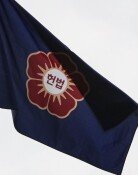‘President of Economy’
‘President of Economy’
Posted November. 01, 2017 08:45,
Updated November. 01, 2017 08:58
In early 2013, a petition for issuing one-trillion-dollar coin par value was in progression in the United States. The purpose was to deposit this coin into the Board of Governors of the Federal Reserve System and receive the same amount of dollars in order to pay off the debt of the U.S. government. Paul Krugman, the Nobel winning economist and New York Times columnist, also joined the petition.
The reason why such absurd discussions can take place is because of the currency issuance system of the Unites States. The Federal Reserve issues American dollars (in bills) by holding the bond of Department of the Treasury as the security, “lending” the money as much as the worth of the security and even collecting interests. But unlike the bills, the coins are minted by the U.S. government. This is the reason why the “discussion on issuance of one-trillion-dollar coin” came to the fore. As the president of the United States appoints its chair and governors, the Federal Reserve can be seen as a government-run bank, but in reality, it is an enterprise whose shareholders include J.P. Morgan and Citi Bank. The shareholders receive about 6 percent of the revenue as the dividend. The budget is not related to the parliament, either. This is the background for the Federal Reserve to remain independent thoroughly. This is the reason why the Chair of the Federal Reserve is called “the President of Economy.”
Alan Greenspan served as the chair of the Federal Reserve for more than 18 years, from August 1987 to January 2006, and he is the most famous chair of the Federal Reserve in history. Paul Krugman said in his book “The Return of Depression Economics and the Crisis” that the former Federal Reserve chair was credited for excessive number of achievements, but it is true that each and every word he spoke shook the market. Alan Greenspan once said that “my influence has been overrated” for himself, perhaps out of feeling uncomfortable. The Wall Street Journal evaluated him as “the master of finding negotiations between the ‘hawks’ (those who prefer the contraction of currency) and the ‘doves’ (those who prefer the easing of currency).” Greenspan's successor, Ben Bernanke, and current Fed Chair Janet Yellen are categorized as the “doves.”
U.S. President Donald Trump will appoint the next chief of the Federal Reserve on Thursday. It is predicted that Fed Governor Jerome Powell, who is a pro-market dove, is likely to be appointed, while John Taylor, a professor at Stanford University and a hawk, is a strong candidate. The bank rate policy of the Bank of Korea cannot help but be influenced by whether the next Fed chief is a dove or a hawk. Just like the politics, the inauguration of “the President of Economy” of the United States is an important matter for Korea as well.
Headline News
- Med professors announce intention to leave hospitals starting Thursday
- Bridge honoring Sgt. Moon Jae-sik unveiled in Pennsylvania
- Chief of Staff Chung tells presidential secretaries to stay away from politics
- US FTC bans noncompete agreements
- N. Korea launches cyberattacks on S. Korea's defense companies







